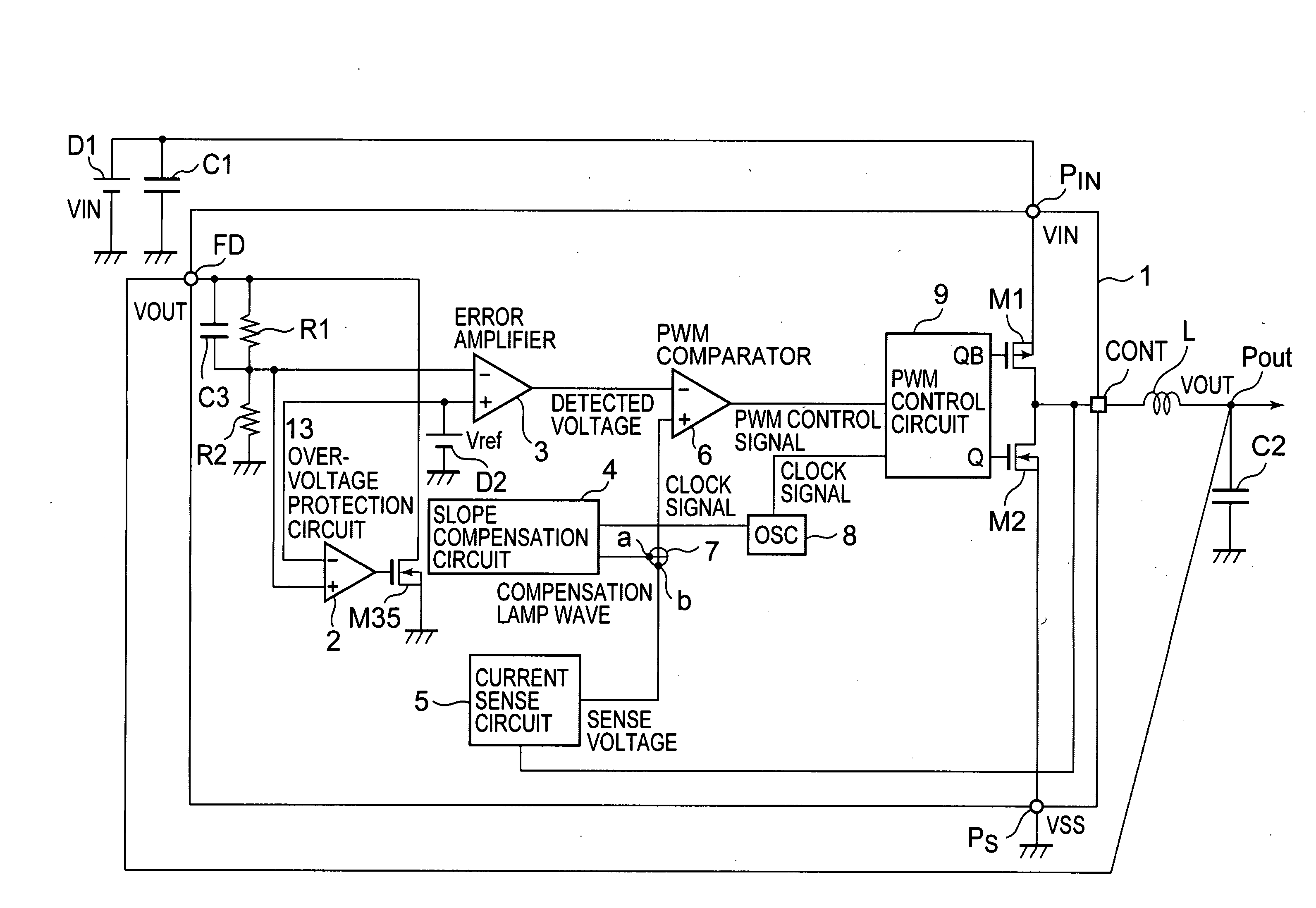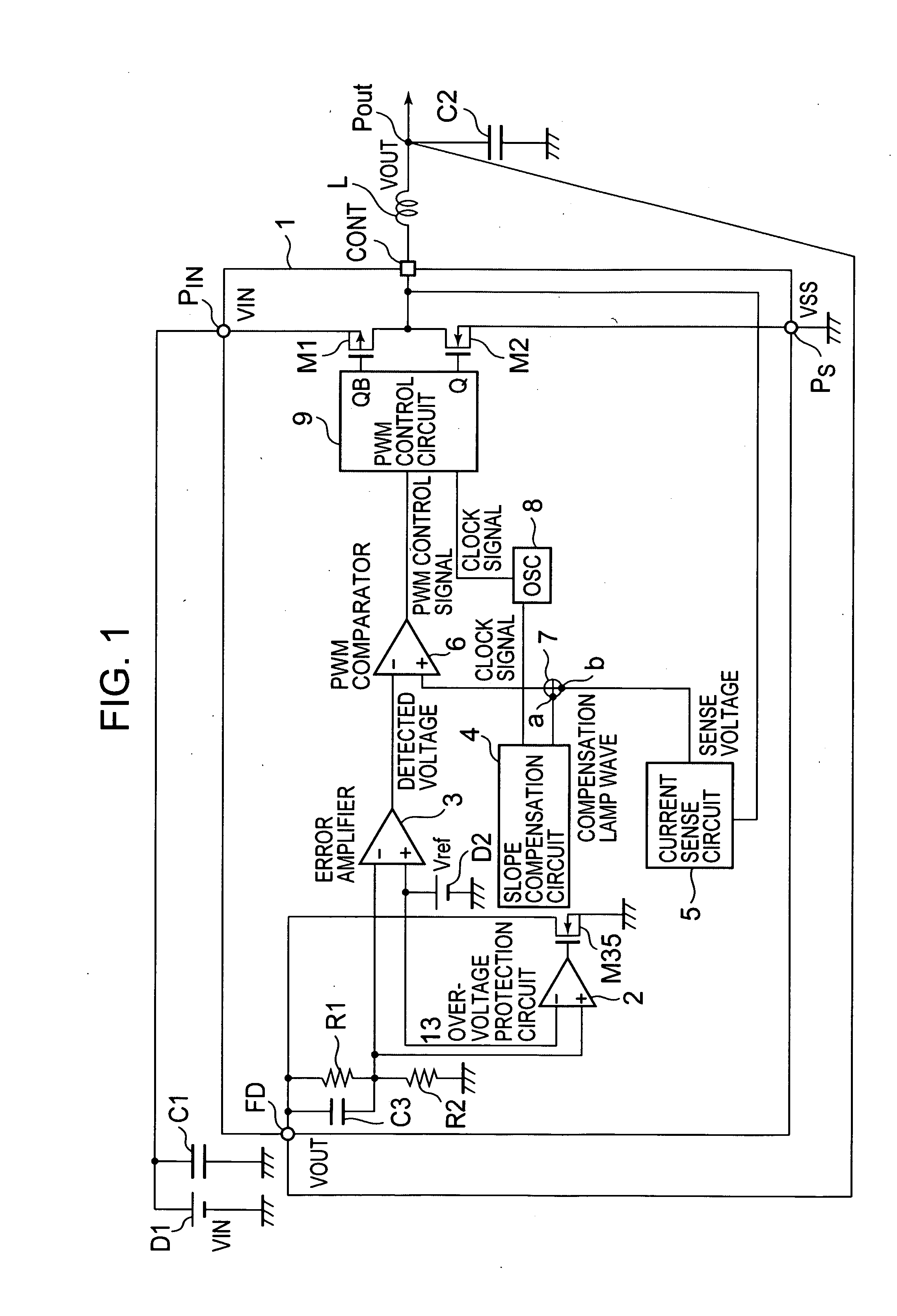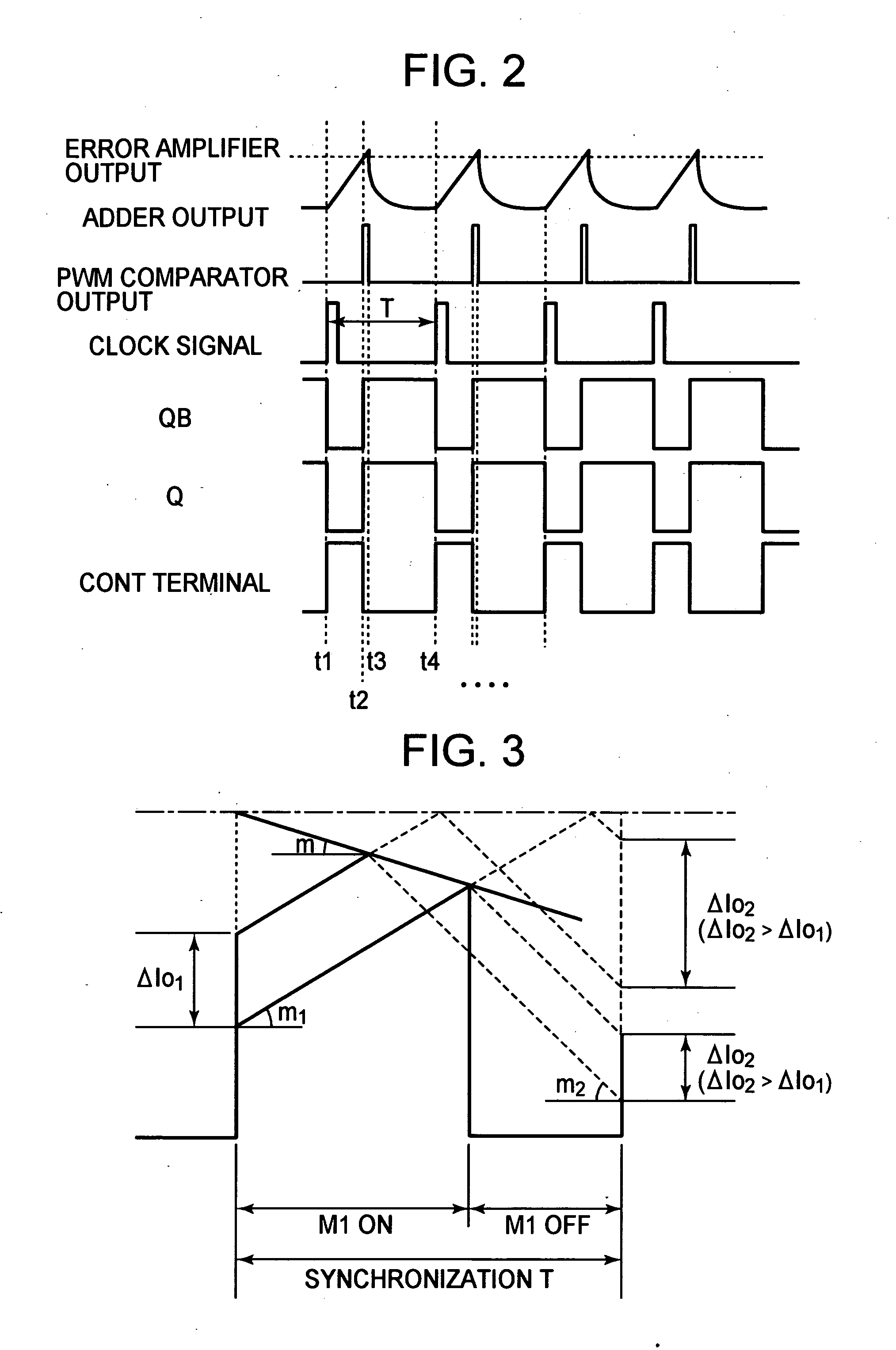Current detector circuit and current mode switching regulator
a current mode switching and detector circuit technology, applied in the direction of ac/dc measuring bridges, ignition automatic control, instruments, etc., can solve the problems of complex process and inability to reduce chip sizes, so as to reduce manufacturing costs, simplify the process of current mode switching regulators, and reduce chip sizes
- Summary
- Abstract
- Description
- Claims
- Application Information
AI Technical Summary
Benefits of technology
Problems solved by technology
Method used
Image
Examples
Embodiment Construction
[0031]Hereinafter, a description will be given of a current mode step-down switching regulator semiconductor device 1 using a current sense circuit 5 according to an embodiment of the present invention with reference to the accompanying drawings. FIG. 1 is a block diagram showing a structure example of the current mode step-down switching regulator according to the embodiment of the present invention. The most characteristic structure of the present invention resides in the current detector circuit 5 which is formed of CMOS that measures at a high precision the current flowing in the coil L of the p-channel transistor M1 to be used for controlling the output voltage Vout which is output from the output terminal Pout, and its details will be described.
[0032]In FIG. 1, the current mode step-down switching regulator according to this embodiment is made up of a current mode step-down switching regulator semiconductor device 1, a coil L used for voltage conversion (step-down in this embo...
PUM
 Login to View More
Login to View More Abstract
Description
Claims
Application Information
 Login to View More
Login to View More - R&D
- Intellectual Property
- Life Sciences
- Materials
- Tech Scout
- Unparalleled Data Quality
- Higher Quality Content
- 60% Fewer Hallucinations
Browse by: Latest US Patents, China's latest patents, Technical Efficacy Thesaurus, Application Domain, Technology Topic, Popular Technical Reports.
© 2025 PatSnap. All rights reserved.Legal|Privacy policy|Modern Slavery Act Transparency Statement|Sitemap|About US| Contact US: help@patsnap.com



